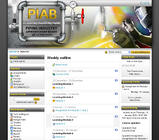When an administrator designs a Moodle course, often the content and back-end functionality comes first. Course creators want to make sure that the course is populated with the appropriate content and participants and Moodle administrators want to be sure that the Moodle is hosted and supported properly and that all tracking and reporting elements are correctly in place. While content and functionality are certainly important, one element of Moodle course design that often gets overlooked, is the Moodle look, feel and Moodle usability.
In the next few blog posts, we will be teaching you the importance of Moodle Usability and how to take your Moodle to the next level. We will explore all aspects of Moodle usability, look and feel, including: Moodle themes, Use of colours and fonts, icons and graphics in Moodle, Moodle layout, Moodle navigation and Moodle Widgets / Moodle behaviours.
Before we begin, let’s first define Moodle usability and why it is of value.
What is Moodle Usability?
Usability can mean different things to different people, although there are usually elements in the definition that are the same. Three of the more generally accepted principles are that usability makes a system:
- »More efficient to use
It takes less time to accomplish a particular task - »Easier to learn
Operation can be learned easily and by observation - »More satisfying to use
Better usability translates to a more engaged and content audience
From an e-Learning standpoint, usability is the effectiveness, efficiency and satisfaction with which users can achieve specified learning or learning related goals; or if you’d prefer – ease of use.
Why does Usability matter for Moodle?

There are a few very simple core reasons why usability is important, especially when it comes to web-based learning. Among these, are:
- »First impressions:
Web users form first impressions of web pages in as little as 50 milliseconds (1/20th of a second). A bad first impression could leave the learner bored, unimpressed and confused. This can ultimately lead to poor motivation, lack of interest and an i ineffective learning environment. - »Rules of engagement:
One of the biggest issues relating to online learning is keeping the learner engaged and interested, in order to facilitate an effective learning environment. Among the factors which can disengage learners, are: poor use of Moodle activities, lack of encouragement for participation and use of outdated technology. - » Frustration leads to abandonment
If a user becomes frustrated in trying to find information or use the system, they simply won’t use it. The same principle stands f for Moodle – if your learners become frustrated with your LMS, they won’t use it. There’s nothing worse than investing in your e-Learning project and not seeing results for your learners.
How do you improve usability in Moodle?
Over the next few blog posts, we will be covering this topic. We will discuss: Moodle themes, Use of colours and fonts, icons and graphics in Moodle, Moodle layout, Moodle navigation and Moodle Widgets / Moodle behaviours.
Stay tuned for updates coming soon!




